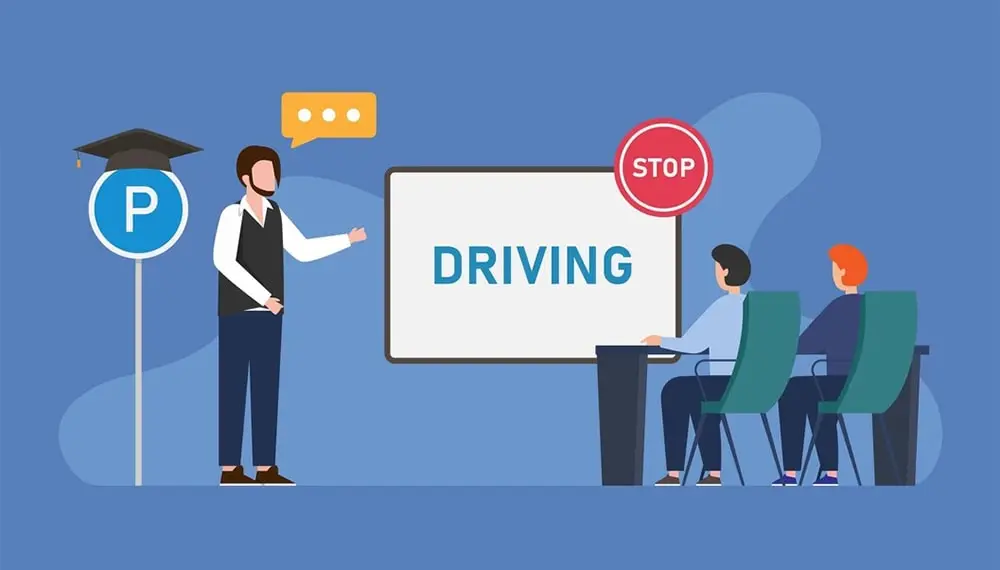Comprehensive Guide to Developing Online Product Knowledge Training Programs
Rohit Kumar
31 Jan, 2025

In today’s fiercely competitive business landscape, equipping employees with a deep knowledge of the products or services they represent is not a luxury—it’s an imperative. Product knowledge training is essential for organizations aiming to stay ahead, ensuring their workforce can confidently articulate the value and intricacies of their offerings to clients and customers.
Whether a sales professional secures a deal, a customer service agent resolves an issue, or a marketing specialist crafts compelling campaigns, the depth of their product knowledge can make or break the customer experience.
As products evolve and markets shift, product knowledge training becomes a dynamic, ongoing process that positions organizations to respond with agility, foster trust, and lead with authority in their industry.
What is Product Knowledge Training?
Product knowledge training is a structured approach to equipping employees with a detailed understanding of a company’s products or services, including their features, benefits, functionality, and practical applications.
Effective product knowledge training boosts employee confidence and enables them to anticipate customer needs, address objections, and provide tailored solutions.
When integrated effectively into an organization’s learning and development strategy, it fosters a culture of expertise and empowers employees to be more proactive and persuasive in their roles.
Types of Product Knowledge Training
1. Feature and Functionality Training
This type focuses on teaching employees about a product's specific features and how they function. It includes a detailed breakdown of how the product works, its unique capabilities, and how these features provide solutions to common customer needs. Employees are trained to explain these functions in simple, relatable terms for clients, ensuring clarity and value alignment.
2. Benefits and Value Proposition Training
Here, the emphasis is on the "why" behind the product. Employees learn to connect product features with customer benefits, emphasizing how the product adds value or solves pain points. This type of training is crucial for enabling employees to communicate the tangible and emotional advantages of a product, which is particularly impactful in sales and marketing roles.
3. Customer Use Case Training
This type immerses employees in real-world scenarios where the product is used. Employees gain insights into practical applications, common challenges, and success stories by understanding how different customer segments interact with the product. This equips teams with relatable narratives and examples to share with potential customers, making their communication more authentic and persuasive.
4. Competitor Comparison Training
Competitor comparison training helps employees understand the market's landscape of competing products. This training covers competitors' offerings, strengths, and weaknesses, enabling employees to articulate what sets their company’s product apart. Such knowledge is essential for handling objections and positioning the product as a superior choice.
5. Compliance and Risk Training
Compliance training becomes indispensable in industries where products are subject to regulations or safety standards. This type covers the legal, ethical, and operational requirements tied to the product, ensuring employees understand and can communicate these aspects responsibly. It is particularly critical for industries like healthcare, finance, and technology.
6. Troubleshooting and Support Training
This training prepares employees to address common product issues that customers might encounter. It includes diagnostic techniques, step-by-step problem-solving methods, and escalation processes for unresolved problems. Employees with this expertise can enhance customer satisfaction by providing swift, accurate resolutions.
7. Hands-On Training
Practical, experiential learning allows employees to interact directly with the product. Using it themselves, they can better understand its functionality, identify potential pain points, and appreciate the user experience. Hands-on training is particularly valuable for customer-facing roles, enabling employees to demonstrate the product confidently during interactions.
8. Technology Integration Training
Integration training is essential for products that work alongside other tools or platforms. Employees learn how the product interacts with existing technologies, ensuring they can guide customers through seamless adoption and use. This type of training often involves technical demonstrations and knowledge-sharing sessions with IT teams.
9. Onboarding Product Training
Onboarding training introduces new employees to the company’s product suite. It provides a foundational understanding of the products’ purpose, key features, and market position. Delivered early in an employee’s tenure, this training sets the stage for deeper learning in subsequent sessions.
10. Ongoing Product Updates Training
Ongoing training ensures employees stay current as products evolve with new features, improvements, or versions. This type of training is often delivered through workshops, webinars, or eLearning modules that focus on incremental updates, enabling employees to maintain their expertise over time.
Understanding the types of product knowledge training is just the first step. To truly empower employees, organizations must focus on delivering this training in ways that resonate, engage, and drive retention.
Today, online product knowledge training emerges as a powerful solution. It combines flexibility, scalability, and interactivity to ensure employees can access and absorb critical product information anytime, anywhere. But how do you design and implement an effective online training program? Let’s explore the steps to create an impactful digital learning experience.
Building Engaging Online Product Knowledge Training Programs
Interactive Online Courses
Online courses provide a foundational format for digital training programs, offering a structured way to convey essential product information. To enhance engagement, these courses can include multimedia elements such as videos, animations, and quizzes.
For example:
Start with a course module introducing the product’s key features and benefits, supplemented by a short video demonstration.
Include knowledge checks, such as drag-and-drop activities, where learners match product features to their corresponding customer benefits.
End each module with a multiple-choice quiz to assess retention and understanding.
Interactive elements like case studies or short decision-making scenarios can also deepen learning by placing participants in real-world contexts.
Gamified Learning Experiences
Games provide an engaging way to teach complex concepts. They make learning enjoyable and immersive. Game-based training works exceptionally well for product strategy, competitive positioning, and feature differentiation concepts.
Example of implementation:
Create a virtual game in which employees simulate customer interactions and choose the best approach to resolve inquiries. Each correct action earns points, and players compete for a spot on a leaderboard.
Design problem-solving puzzles where learners identify a product’s unique selling points relative to a hypothetical competitor.
For organizations with tighter budgets, quizzes or interactive flashcards with rewards can offer a more affordable gamified experience.
Role-Playing Simulations
Role-playing allows employees to practice customer-facing scenarios in a risk-free environment, which is crucial for teams in sales and support roles. These simulations can help employees refine their communication and persuasion skills while becoming more confident in handling product-related queries.
How to create:
Develop scripts based on typical customer scenarios, such as handling objections about pricing or explaining a product’s value proposition.
Design branching role-play exercises where the outcome changes based on the learner’s choices, giving them real-time feedback and highlighting areas for improvement.
Incorporate audio or visual aids, like virtual avatars or voiceovers, to make the simulations more immersive.
For example, a virtual customer might question a product’s reliability. Learners could choose from a range of responses, and the scenario would adapt based on their selection.
Training Videos
Videos are one of the most versatile formats for training. They are highly effective for demonstrating product features, sharing expert insights, or walking employees through complex processes step-by-step.
Practical example:
Record a video that showcases how to assemble a product or operate a software tool. Include voiceover explanations for each step and highlight key features on-screen.
Combine screencasts and live-action clips to explain both physical and digital products.
Encourage storytelling by incorporating customer testimonials or examples of how the product solves real-world problems.
Even low-budget videos can achieve great results with clear visuals, concise narration, and relatable examples.
Quizzes and Knowledge Checks
Quizzes are an interactive and straightforward way to reinforce learning and measure progress. They can range from simple multiple-choice tests to more creative formats like scenario-based questions or drag-and-drop exercises.
How to implement:
Develop quizzes that test learners’ understanding of product features and benefits, incorporating immediate feedback to reinforce correct answers.
Use scenario-based questions, such as asking learners to recommend a product configuration for a specific customer need.
Include drag-and-drop activities where employees match product features to specific use cases or customer profiles.
Regular knowledge checks embedded throughout the training ensure learners remain engaged and help track their progress.
Virtual Meetings and Webinars
Sometimes, live interaction is essential for addressing complex topics or fostering collaboration. Virtual classrooms or webinars allow instructors to provide real-time guidance, answer questions, and facilitate discussions.
Steps to implement:
Schedule live sessions to introduce new product features or conduct Q&A sessions with subject matter experts.
Use breakout rooms for minor group activities where participants can discuss customer scenarios or share best practices.
Record webinars so employees who cannot attend live can access the material later, ensuring inclusivity.
Core Competency Is the Partner for Your Employees’ Skill Growth Journey
At Core Competency, we understand that a successful Learning and Development strategy requires more than just great ideas—it demands the right tools and support to bring those ideas to life. Our cutting-edge Learning Management System (LMS) and comprehensive suite of L&D solutions are designed to empower organizations to easily create, deliver, and manage impactful training programs. Whether personalized learning paths, seamless content delivery, or actionable analytics, our products ensure that every aspect of your L&D strategy aligns with your organizational goals. Partner with Core Competency to transform employee development into a competitive advantage and build a workforce ready to meet today’s and tomorrow’s challenges.




